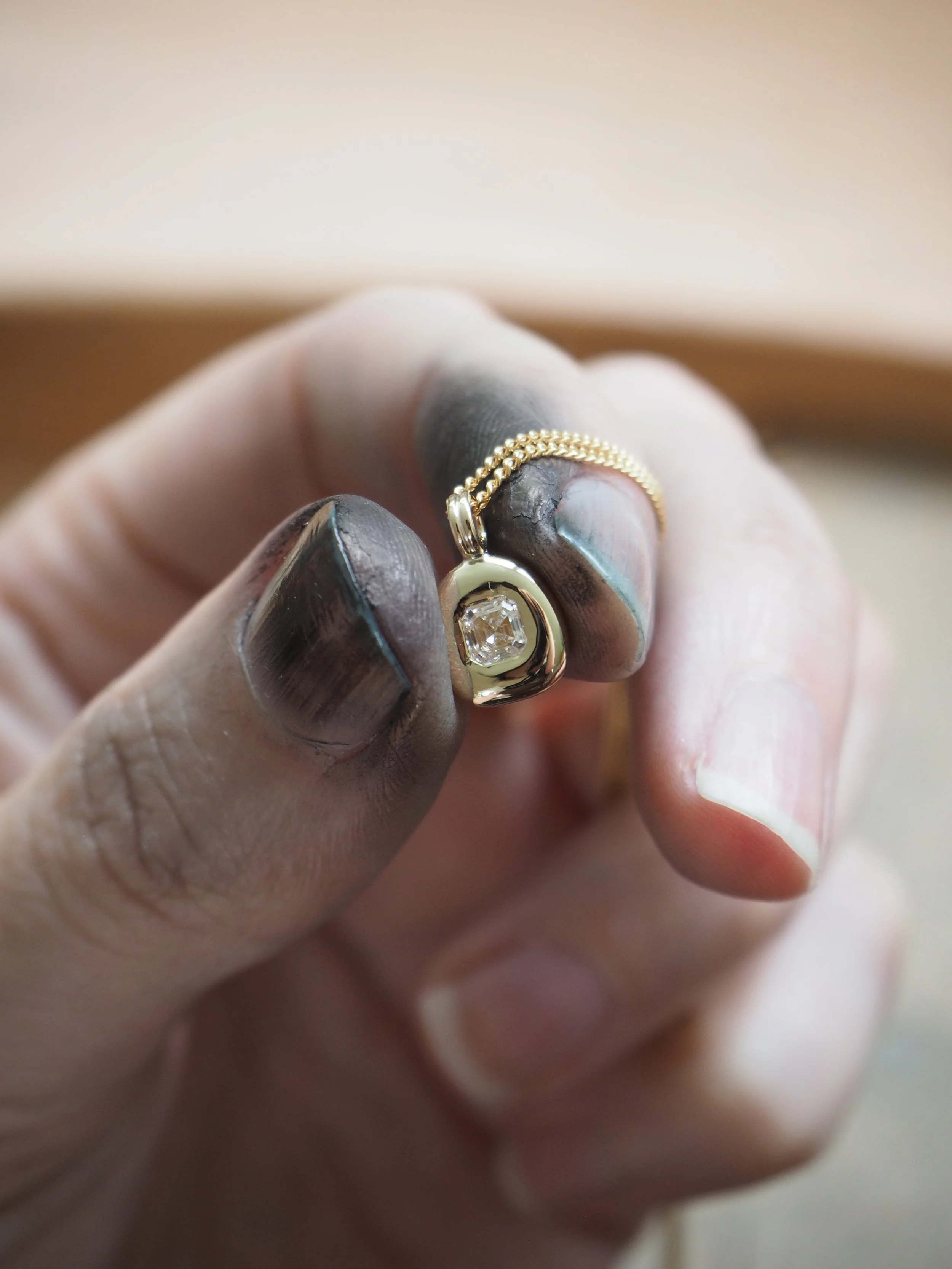Lab-Grown vs Natural Diamonds:
What’s the Difference and How to Choose What’s Right for You
When it comes to choosing a diamond — whether for an engagement ring, a bespoke heirloom piece, or a meaningful personal treasure — one of the most common questions I hear is: should I choose a natural diamond or a lab-grown diamond?
Both are real diamonds. Both are beautiful. But each carries its own story, origin, and considerations. Let’s look at what makes them different, and how to decide which is right for you.
What is a Natural Diamond?
Natural diamonds are formed deep within the Earth, around 150–200 kilometres below the surface. Over millions - sometimes billions - of years, intense heat and pressure transform pure carbon into a crystalline structure that becomes a diamond.
Volcanic eruptions then push these stones closer to the surface, where they’re mined, cut and polished into the gems we know and love.
Each natural diamond is unique - a tiny fragment of Earth’s deep history, formed long before humans existed. Their rarity and natural origin are part of what makes them so treasured.
Composition: Pure carbon atoms arranged in a cubic crystal structure.
Formation: Over millions of years, deep within the Earth under extreme heat and pressure.
What Is a Lab-Grown Diamond?
Lab-grown diamonds are chemically and physically identical to natural diamonds - they’re made of the same carbon crystal structure - but are created in a controlled laboratory environment rather than in the Earth.
Two main processes are used:
HPHT (High Pressure High Temperature): Mimics the Earth’s natural conditions by applying extreme heat and pressure to carbon.
CVD (Chemical Vapour Deposition): Grows a diamond layer by layer from a carbon-rich gas inside a vacuum chamber.
Because they’re grown under controlled conditions, lab diamonds often have fewer inclusions and can be produced in one to two weeks instead of millennia.
Composition: Pure carbon, identical to natural diamonds.
Formation: Grown in a lab using advanced technology that replicates natural conditions.
The Benefits: Natural vs Lab-Grown
How to Choose the Right Diamond for You
There’s no single “better” choice — only what aligns best with your values, budget and story.
1. Consider Your Budget
If you’re looking for the most brilliance for your budget, a lab-grown diamond can offer a larger stone or higher clarity grade at a lower cost.
If your priority is owning something naturally rare and formed over billions of years, a natural diamond may feel more meaningful.
2. Think About What Feels Authentic to You
Some people are drawn to the romance of a natural diamond - a piece of the Earth’s history, created over time.
Others love the innovation and accessibility of a lab-grown diamond - a symbol of modernity and conscious choice.
3. Sustainability and Ethics
Both options come with environmental impacts.
Mining requires land and energy, but responsible sourcing and traceability initiatives are improving the industry.
Lab-grown diamonds eliminate mining but can have incredibly high energy demands depending on how they’re produced.
4. Long-Term Value
If you view your diamond as an investment or family heirloom, a natural diamond traditionally retains more long-term value. As more and more lab-grown diamonds are coming onto the market, it is believed their value will decrease over time.
If your focus is on design, beauty and meaning right now - not resale - a lab-grown diamond can be a wonderful choice.
Whether you choose a natural or lab-grown diamond, both are equally real and equally capable of holding love, memory and meaning.
The most important thing is that your diamond tells your story - whether that story began deep within the Earth or inside a modern-day laboratory.


